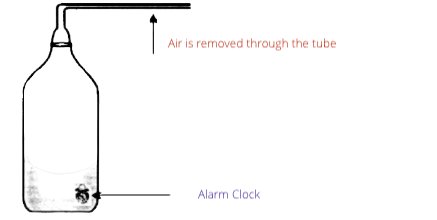Class 8 Science NCERT Exemplar Solutions Chapter 13 Sound
FAQs on NCERT Exemplar for Class 8 Science Solutions Chapter 13 Sound
1. What are the important topics covered under NCERT Exemplar Solutions for Class 8 Science Chapter 13 Sound?
Chapter 13 sound is one of the very important chapters for class8 students and it is also a scoring chapter. You can get guidance from expert teachers to get a better understanding of the concepts of this chapter. Here are the topics covered under this chapter are :
The sound is Produced by a Vibrating Body
Sound Produced by Humans
Sound Needs a Medium of Propagation
We Hear Sound through Our Ears
Amplitude, Time Period, and Frequency of a Vibration
Audible and Inaudible Sounds
Noise and Music
Noise Pollution.
2. How can I score full marks in Chapter 13 of NCERT Exemplar Solutions for Class 8 Science?
In order to score full marks in the class8 examination you can get complete guidance from the expert team of Vedantu which is highly qualified and experienced. They have researched and prepared the best study material to help the students to get conceptual knowledge about each topic. Also, they provide one-to-one classes for the students to clear any of their doubts and help them to get a better understanding of the topics. You can excel in examinations by following the exam pattern provided by CBSE.
3. How is the sound produced covered in the Chapter 13 of NCERT Exemplar Solutions for Class 8 Science.
According to Chapter 13 Sound in the NCERT book. The sound is said to be produced when the object starts vibrating by any force. The sound produces a vibration that further transfers and travels in the form of waves that reach our ears so that we can hear it. Candidates are advised to study from NCERT exemplar solutions from Vedantu to get a complete understanding of the concepts. The answers given in the NCERT exemplar solutions are according to the NCERT guidelines that help students to know the answer pattern they need to write in the exam. This helps to build a level of confidence among students so that they can appear in exams without any fear.
4. How many chapters are there in Class 8th Science? Why is studying Class 8 Chapter 13 sound important?
There are a total of 18 chapters in the Class 8 NCERT Science book. Students should cover all the chapters to score good marks in the exams. You can get the best result only when you answer all the questions in the exam for which you have to study your complete syllabus.
5. Where can I get Class 8 Science NCERT Exemplar Solutions Chapter 13 Sound?
After deep study and research the expert team of Vedantu has given the most reliable study material that is 100% accurate and is according to the CBSE guidelines. You can get the best result by studying the Class 8 Science NCERT Exemplar Solutions Chapter 13 Sound. You can also do a self-assessment by completing the sample question paper given by Vedantu that will help you in getting ready for the exams and knowing your weak areas on which you need to work.



















